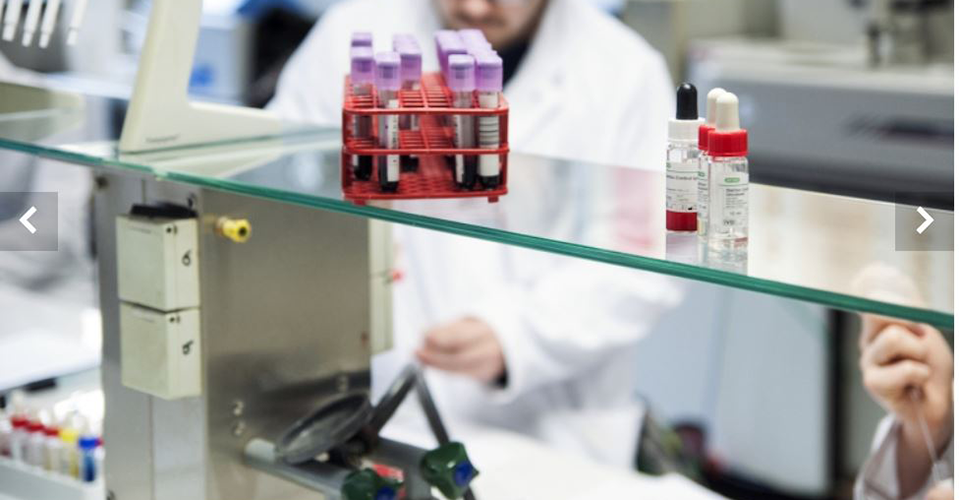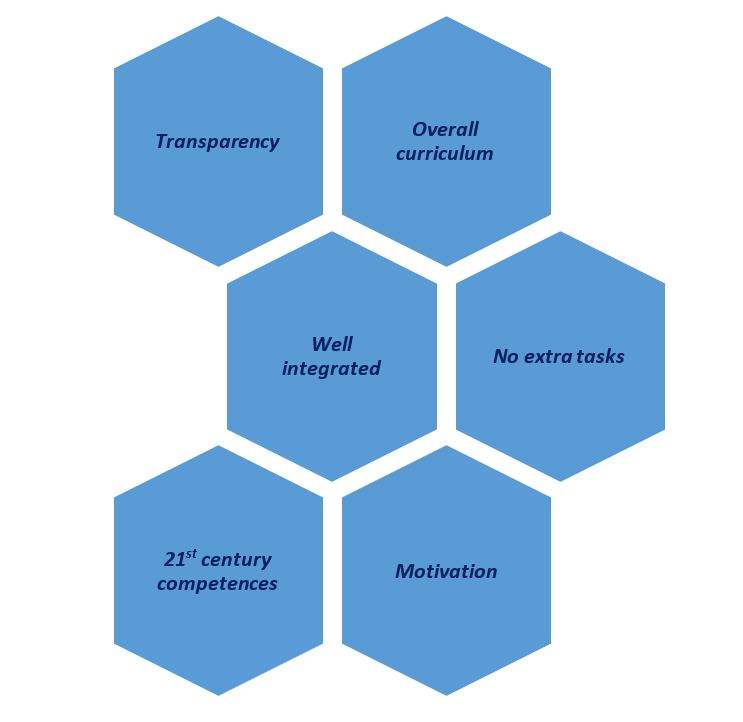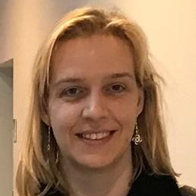
Karolien Devaere & Vicky De Preter
The landscape of higher education and the role of higher education institutes in training of well-qualified professionals has changed over the last decades due to different processes. Students do not longer need to gather a lot of knowledge, but additionally, they need to enhance generic competencies to use during their future career.
In the present study, the use of a digital portfolio (ePortfolio) as a tool to obtain all the necessary competencies was addressed. The study was performed in the biomedical field and different stakeholders in this field participated.
The proposed ePortfolio from the UCLL was compared with the principle of ‘Competency-Based Education’. Taking into account the viewpoint of the different relevant stakeholders, the ePortfolio complies with the principles of Competency-Based education.
Introduction
During the last decades, the industrial and academic field of biomedical sciences has evolved significantly worldwide. This evolution is characterized by digitalization, flexibility, networking and decentralization, all due to globalization leading to transnational networks wherein processes take place irrespective of distances or borders (van den Berg 2003; Verhoeven, Kelchtermans, & Michielsen 2004). The endless possibilities of the World Wide Web and wireless communication contribute to these expanding networks (Claassen & Dehandschutter 2008).
Not only the professional environment is changing, the landscape of higher education also has to adapt concurrently. Biomedical professionals are expected to immediately be productive, to work independently and be capable of problem solving. They have to be aware of the 21st century competencies. Moreover, this sector is increasingly active in an international context. Laboratory staff are expected to communicate fluently in English and to work in international teams. Consequently, there is a need for well-qualified and well-educated professionals.
Higher educational institutes have to keep up with this changing educational and professional environment. There is a need for more transparency and recognition of qualifications and competencies of biomedical professionals to enhance their employability, skills and professional qualifications in line with the changing sector of biomedical sciences and beyond. This will result in the improvement of the young professionals’ position in the European Union labor market.
Within the context of this fast changing sector, there is also the need for ‘Continuing Professional Development’ (CPD), in line with life-long learning. Brown (1992) states: “A portfolio is a private collection of evidence which demonstrates the continuing of skills, knowledge, attitudes, understanding and achievements. It is both retrospective and prospective, as well as reflecting the current stage of development and activity of the individual.” A so-called portfolio is expected to document and define the roles, responsibilities, goals and contributions to both the employer and the profession. Before, such a portfolio was a tool mainly used by teacher education programmes. Nowadays, other educational programmes show increasing interest in its application.
In 2010, a project ‘European guidelines for CPD’ funded by the European Commission, was started within the biomedical field. Ten different institutes (hospitals, higher education institutes and steering committees) all over Europe participated in this project to define European guidelines within the biomedical field for CPD and a way to monitor CPD activities from employers (EucoLabs 2012). The Eucolabs project created a European model for CPD registration. Such a professional portfolio is an essential element of the assessment criteria for every biomedical laboratory scientist.
Currently, a digital portfolio (ePortfolio) is a tool that can help instructors. It is an excellent tool to teach students all the necessary competencies, i.e. ‘competencies of the 21st century’, including generic competencies. Students have the opportunity to get involved in their own learning process and career development, as stated in the definition given by the ‘Empowering ePortoflio Process’ (EEP) project (Kunnari & Laurikainen 2017, 7). Besides, also van Wyk (2017) found that the ePortfolio is an empowering tool to enhance self-directed learning. Working with an ePortfolio provides the opportunity to guide your own learning process, similar to those in e.g. internships. By asking a student to describe how certain tasks need to be done, the student is stimulated to complete those tasks in a fruitful way. Actually, the student is doing a self-assessment concerning the task. This self-assessment is a guiding tool for the student (van Berkel & Bax 2006).
Since 2015–2016, there have been 19 bachelor and master’s degree programmes within the Association KU Leuven that started a pilot in ‘My Portfolio’, with KU Leuven (13) and UC Leuven-Limburg (3) being the most frequent users. Only two of them are teacher education programmes (Associatie KU Leuven 2017), the other departments involved are related to medicine, economy, STEM education, etc.
At the University of Applied Sciences UC Leuven, the Biomedical Laboratory Technology (BLT) programme aims to make the elaboration of generic competencies more clearly visible in the curriculum. As they implemented a new curriculum in September 2018, they tried to do this by using an ePortfolio. Therefore, they have consulted different stakeholders, i.e. students, teachers, the professional field and the steering committee for the BLT profession in Belgium to establish the need to work on generic competencies and the belief to do so by using an ePortfolio. The focus of this study is to reflect the intention of the proposed ePortfolio by UCLL against the principles of ‘Competency-based education’ (CBE).
Competency-based education
Frank, Mungroo, Ahmad, Wang, De Rossi, & Horsley (2010) conducted a systematic review in order to define a definition for CBE. They had to conclude that the speaking of competency-based education was highly variable.
Competency-based education is often applied within healthcare education such as BLT. Besides its focus on healthcare, CBE focuses also on some generic competencies (being flexible, self-responsible, learning oriented) (Mulder & Gulikers 2011). Making generic competencies more visible in the curriculum was also the starting point for UCLL-BLT to introduce their ePortfolio.
Voorhees and Bedard-Voorhees (2017) described the following principles of CBE:
- State competencies based on desired learning performance;
- Use scaffolding to support achievement of an entire set of competencies;
- Structure competencies to accelerate learning;
- Competency assessments should be criterion-referenced, personalized and flexible;
- Competency statements determines appropriate assessments;
- Balance the use of locally and commercially developed assessments;
- Implement a CBE tracking system;
- Successful CBE instruction requires evaluation.
Another university college in Belgium, Artevelde hogeschool, under supervision of Mieke Embo already set up a model taking into account those principles, ‘Embo’s Continuous Workplace Learning Model’ (Embo, Driessen, Valcke, & van der Vleuten 2015).
ePortfolio within BLT at UCLL
The following part defines the setting and themes that were important for the BLT study programme of UCLL to create their ePortfolio.
The implementation of the ePortfolio was planned for September 2018. Until now the educational programme did not used an ePortfolio but there was a growing interest especially after taking part of the Erasmus + programme ‘Empowering ePortfolio Process’ from 2016 till 2018. A couple of years ago Leuven University College (KHLeuven) and Limburg University College (KHLim) merged to University colleges Leuven-Limburg. Both curricula needed to merge and the harmonized curriculum took off in September 2018. This merging of the curricula was an ideal momentum to introduce an ePortfolio as well.
Setting
The study was performed within the educational programme ‘Bachelor in Biomedical laboratory technology’ at UC Leuven-Limburg (Belgium). The programme belongs to the Group Health and is located at two campuses: Diepenbeek (Limburg) and Gasthuisberg (Leuven). The team of instructors consists of a combination of professional bachelor’s, master’s and/or master’s with PhD degrees. The educational programme BLT has level six of the Flemish Qualification Framework and has a duration of three academic years. The first year is a common year for all the students. From the second year on, students choose between ‘Pharmaceutical and biological laboratory technology’ (FBT) which is more biomedical research related, or ‘Medical laboratory technology’ (MLT) which is more related to the clinical setting. Both professions work within the biomedical work field.
Purpose
The introduction of the ePortfolio has several objectives. First of all, the BLT-UCLL programme wants their graduated students to be prepared for the constantly changing biomedical environment. They want to provide them with some generic competencies that will be useful in this environment, aiming to create so-called ‘Next generation students’. This also fits within the vision of the UCLL as they create a BachelorProof model for all their graduated students (UC Leuven-Limburg 2017). As discussed in Devaere 2018b, an ePortfolio can be a fruitful tool to do so. To create next generation students and intently work on generic competencies, the study programme aims to make these competencies more visible in the curriculum. Generic competencies such as working in a team, lifelong learning, being critical are not easy to teach within one curricular unit. Therefore, the programme chooses to introduce the ePortfolio overall the curriculum. In that way, the ePortfolio can contribute to intercourse and interdisciplinary competencies. Students will be responsible for planning and organization of the different tasks of the ePortfolio. Teachers need to provide them with professional guidance by given support in their own autonomy next to a well-structured learning environment. This is necessary for autonomous motivation as stated by Vansteenkiste, Sierens, Soenens, and Lens (2007).
Next to this, UCLL-BLT believes that an ePortfolio is suitable as an interactive communication, evaluation and reporting tool during an internship. This was also confirmed by the relevant students, however they prefer the combination with face-to-face feedback and discussion (Devaere, Martens, & Van den Bergh 2017). This was confirmed by Deketelaere (2010): “An ePortfolio is often used to communicate with different stakeholders in internship follow-up”.
Third, as mentioned before, there is a growing interest to use ePortfolio within STEM education.
Finally, all stakeholders need to get motivated and inspired by the ePortfolio. “Students want to be acknowledged for their engagement and competencies. Sometimes students do (extracurricular) activities which get none or not enough recognition.” (Kunnari & Laurikainen 2017, 30). So UCLL-BLT will implement a task on extracurricular activities like social responsibility within the ePortfolio.
The use of teaching-learning methodologies with emphasis on real-life phenomena, for example an internship, allows students to reflect, connect and experience (Dochy & Nickmans 2005).
Themes
The themes around which the ePortfolio was built are given in figure 1. Those themes evolved from the purposes described before.

More information about the set-up can be found in the referred movie.
How do different stakeholders think about the proposed model?
By involving all stakeholders, the study programme was able to create a shared vision on their use of ePortfolio. Building a shared vision is one of the five building blocks defined by Senge for learning (Dochy, Gijbels, Segers, & Van den Bossche 2011).
Students, teachers and the organizational level were already interviewed about the implementation of an ePortfolio in the UCLL-BLT (Devaere et al. 2017; Devaere 2018a; Devaere 2018b). The steering committee was the last stakeholder that needed to be interviewed.
The steering committee for BLT in Belgium, ‘Belgian association for laboratory technology’ (BVLT), is an organization that supports the profession in discussions with policy makers and the world of work. They organize different workshops and courses to provide the CPD. BVLT is a member of the European steering committee ‘European association for professionals in biomedical sciences’ (EPBS). An in-depth interview was performed with the president of BVLT. It was an open interview sharing some thoughts and getting to know the vision of the steering committees on the changing professional environment and how the educational environment can be helpful to the changing professional environment. The interview started by stating the themes (figure 1) which the educational programme has in mind for their ePortfolio pilot. By choosing for a semi-structured preparation, the researcher could stick to questions he needed to get an answer on, but there was also the possibility to add further questions if necessary for clarification or to summarize (Savin-Baden & Mayor 2013).
BVLT was one of the partners in the EucoLabs project. As representative organization for BLT employers they encourage the intentions of the UCLL-BLT programme to work on 21st century competencies throughout their curriculum and the recognition of the changing world of work. Within the EucoLabs project they developed a framework for CPD by using portfolio. In that way it is obvious to conclude that the Belgium and European steering committee believe that it is possible to enhance generic competencies through ePortfolio.
ePortfolio versus CBE
The purpose of the CBE and the ePortfolio in UCLL-BLT is to enhance deep-level learning. Therefore all stakeholders (students, teachers, working field, steering committees) need to adapt their roles to create an inspiring learning-environment. For example as stated by Entwistle, McCune, & Scheja (2006): “The teachers’ enthusiasm for the subject and the level of active support provided”.
The principles of Voorhees and Bedard-Voorhees (2017) described for CBE, can now be compared to the proposed model of UCLL-BLT:
State competencies based on desired learning performance
Domain specific learning outcomes (DLRs) are defined by all BLT education programmes all over Flanders (Nederlands Vlaamse accreditatieorganisatie 2014). The learning outcomes are described on three levels, which makes it possible to define the growth of a student within their learning process. The learning performance for the ePortfolio is stated and well-defined.
Use scaffolding to support achievement of an entire set of competencies
As mentioned before teachers will support the students by guiding them throughout their learning process. Since the ePortfolio is introduced in all three years of the study programme, it is possible to provide more guidance in the first year and leave more autonomy for the students in the last year concerning the same competency.
Structure competencies to accelerate learning
The competencies that will be evaluated within the ePortfolio need to be described very specific. It needs to be clear for the student which additional behavior is expected in each level. This is not yet elaborated in detail in the proposed model.
Competency assessments should be criterion-referenced, personalized and flexible
To evaluate the competencies, criteria should be defined by using rubrics. At this point it is not the main purpose of the teachers and organizational level to allow a very personalized evaluation form. This could be a good follow-up. Still, since students will have a lot of open defined tasks they need to fulfill, they will have the opportunity to bring in personal preferences.
Competency statements determines appropriate assessments
Evaluation will be done at certain fixed moments. Students will be aware of this and are able to follow their own learning-process. It will be a challenge for teachers and the organizational level to provide good appointments between the different teachers involved in the evaluation (Devaere 2018a).
Balance the use of locally and commercially developed assessments
The UCLL-BLT programme will not use commercially developed assessments. They try to adapt their ways of assessment to the given context.
Implement a CBE tracking system
Since the ePortfolio will be used in three academic years, students will have to monitor their learning within the ePortfolio at fixed moments set by the portfolio coordinator.
Successful CBE instruction requires evaluation
It will be the responsibility of the portfolio coordinator to evaluate the model and implementation and adjusting if necessary.
Discussion
The 21st century competencies like problem solving, critical thinking and teamwork are classified as generic competencies, which are applicable across different professional contexts (Miller 2015; Winch 2015). These competencies are more and more incorporated in the biomedical profession. The biomedical field is rapidly changing, enforcing higher education programmes, which prepare students for a biomedical profession, to adapt concomitantly to this changing environment. Consequently, they also need to have a clear focus on 21st century competencies. After previous discussions with different stakeholders related to the biomedical profession (Devaere et. al 2017, Devaere 2018a, Devaere 2018b) to evaluate their perspective on the use of an ePortfolio, the preparation work of the study programme was concluded after further discussion with the steering committee. The qualitative research that was done in preparation of the implementation was important: “Qualitative research is social research that is aimed at investigating the way in which people make sense of their ideas and experiences” (Savin-Baden & Mayor 2013, 11). In this way ideas and experiences of the particular members could be taken into account.
The proposed model was compared with the principles of competency-based education to see which adaptations need to be done before introducing the ePortfolio.
The first time students come into contact with an ePortfolio is during their studies. As suggested, 21st century competencies need to be practiced and evaluated in different courses and at different stages of the programme. By visualizing the learning process, these competencies in an ePortfolio, students can be efficiently coached and guided by different stakeholders at different stages. It is an advantage that the personal growth of the student will be central in this ePortfolio. Teachers will have the opportunity to follow the growth of students and provide to-the-point guidance. One of the main objectives of the ePortfolio is to motivate students and teachers. This process will be enhanced by using existing tasks on fixed moments instead of developing additional tasks. Students will be motivated by creating useful and well-described tasks. Besides this, there was inspiration gathered from the EEP focus on empowering students as it was to be more autonomous. This will be realized by creating tasks to be performed by students throughout their entire bachelor programme.
It is believed that generic competencies can only be developed in combination with domain-specific qualifications. For example teamwork should be practiced within domain-orientated problem situations.
The next stage in which an ePortfolio can enhance the generic competencies, is after graduation. In the period from student-to-professional, students can download their ePortfolio and use that as an addendum to their CV’s during job interviews. In this way, recruiters obtain a broader perspective of the solicitant. If students are aware that recruiters indeed consult the ePortfolios during job interviews, they will be more motivated to complete their ePortfolio during their academic career. However, during the focus group interviews, it appeared not completely sure in the world of work that an ePortfolio will be preferred over on-site experience with students during an internship.
Finally, during their professional career, employers can keep their ePortfolio up-to-date with life-long learning activities. Indeed, the steering committees of Belgium and Europe are convinced of the need to use a portfolio for obtaining the obliged CPD. Altogether, all the different stakeholders believed that the 21st century competencies can be enhanced through an ePortfolio.
In conclusion, it will be important to create a common framework for an ePortfolio to share concepts and values among different stakeholders (Embo et al. 2015). This will be the role of the school, teachers, and the organizational level. Especially on the organizational level, some questions still remain and some aspects need to be rethought before actually implementing the ePortfolio and communicating to the other stakeholders.
By asking the different stakeholders about their ideas concerning the proposed model, the educational programme intend to share their vision. Also, Melnyk & Davidson (2009) described the importance of a shared vision to reach educational innovation.
The comparison of the CBE principles to the proposed model of UCLL-BLT shows that a lot of principles are covered already. Although, some adaptions need to be done especially at the level of evaluation. The portfolio-coordinator needs to think how to clarify the evaluation criteria concerning the different generic competencies since they will be evaluated in different courses. A quality check system should be developed to notice whether all principles and aims will be reached. At the organizational level some issues need to consider as previously mentioned by Devaere (2018a).
All participants believe that we have to proceed to help students obtain the 21st century competencies by using the ePortfolio and to develop next generation graduate students with the required benefits for the modern workplace.

This article was produced in the Erasmus+ (KA2 action) funded project “Empowering Eportfolio Process (EEP)”. The beneficiary in the project is Häme University of Applied Sciences (FI) and the partners are VIA University College (DK), Katholieke Universiteit KU Leuven (BE), University College Leuven-Limburg (BE), Polytechnic Institute of Setúbal (PT) and Marino Institute of Education (IE). The project was implementated during 1.9.2016–30.11.2018.
Authors

Karolien Devaere works in the Department of Health of UCLL, within the educational Programme “Biomedical laboratory Sciences”. She is a teacher in microbiology, internship coordinator and a member of the programme board. She is Biomedical laboratory technologist herself and has a master degree in Educational sciences.

Vicky De Preter works in the Department of Health of UCLL within the educational Programme “Biomedical Laboratory Sciences” and “Nutrition”. She is a lecturer, an international officer for BLS and a member of the programme board. She has a PhD in Applied Biological Sciences and Engineering, a Proficiency in Teaching Sciences and has a researcher background at the Catholic University of Leuven.
References
Associatie KU Leuven. (2017). Piloot – Toledo – My Portfolio – Klankbordgroep. Retrieved 23 February 2017 from https://toledo.kuleuven.be/english/index.php
Brown, R. (1992). Portfolio development and profiling for nurses. Lancaster, UK: Quay Publishing.
Claassen, A. & Dehandschutter, A. (2008). PSAI: Een instrument voor interne kwaliteitszorg in het hoger onderwijs. Katholieke Universiteit Leuven, The Faculty of Psychology and Pedagogical Sciences, Belgium.
Deketelaere, A. (2010). Learning with a portfolio in clinical workplaces. Antwerpen, Belgium: Garant.
Devaere, K. (2018a). ePortfolios in teachers’ work at UC Leuven-Limburg. In I. Kunnari (Ed.) Higher education perspectives on ePortfolios. HAMK Unlimited Journal 2.10.2018. Retrieved 6 October 2018 from https://unlimited.hamk.fi/ammatillinen-osaaminen-ja-opetus/eportfolios-uc-leuven-limburg
Devaere, K. (2018b). Transparency in ePortfolio at UC Leuven-Limburg. In M. Laurikainen & I. Kunnari (eds.) Employers’ perspectives on ePortfolios. HAMK Unlimited Professional 14.8.2018. Retrieved 6 October 2018 from https://unlimited.hamk.fi/ammatillinen-osaaminen-ja-opetus/transparency-in-eportfolio-uc-leuven-limburg
Devaere, K., Martens E., & Van den Bergh, K. (2017). Analysis on students’ ePortfolio expectations. In I. Kunnari & M. Laurikainen (eds.) Students’ perspectives in ePortfolios. HAMK Unlimited Journal 5.1.2018. Retrieved 17 January 2018 from https://unlimited.hamk.fi/ammatillinen-osaaminen-ja-opetus/analysis-on-students-eportfolio-expectations
Dochy, F., Gijbels, D., Segers, M., & Van den Bossche, P. (2011). Theories of learning for the workplace. Oxon: Routledge.
Dochy, F., & Nickmans, G. (2005). Competentiegericht opleiden en toetsen: Theorie en praktijk van flexibel leren. Utrecht, The Netherlands: Boom Lemma Uitgevers.
Embo, M., Driessen, E., Valcke, M., & van der Vleuten, C.P.M. (2015). Integrating learning, assessment and supervision in a competency framework for clinical workplace education. Nurse education today 35, 341–346.
Entwistle, N., McCune, V., & Scheja, M. (2006). Student learning in context: Understanding the phenomenon and the person. In L. Verschaffel, F. Dochy, M. Boekaerts, & S. Vosniadou (Eds.), Instructional psychology: Past, present and future trends: Sixteen essays in honour of Erik De Corte. Amsterdam: Elsevier, 131–148.
Eucolabs (2012). European guidelines for CPD. Retrieved 27 April 2018 from http://www.biomed-austria.at/downloads/European%20guidelines%20for%20CPD_final.pdf
Frank, JR., Mungroo, R., Ahmad, Y., Wang, M., De Rossi, S. &Horsley, T. (2010). Toward a definition of competency-based education in medicine: A systematic review of published definitions. Med Teach 32(8), 631–637.
Kunnari, I. & Laurikainen, M. (eds.). (2017). Collection of Engaging Practices in ePortfolio Process. Retrieved 17 December 2018 from https://drive.google.com/file/d/0BxEnFq7yUumMUGV2V2VxVmNaNFU/view
Melnyk, B. Z., & Davidson, S. (2009). Creating a Culture of Innovation in Nursing Education Through Shared Vision, Leadership, Interdisciplinary Partnerships, and Positive Deviance. Nursing Administration Quarterly 33(4), 288–295.
Miller, M. A. (2015). Academic Leadership Workshop: 6 Cs for the Education Future & how they apply to Central’s context? Retrieved 17 January 2018 from https://slideplayer.com/slide/6370472/
Mulder M. & Gulikers, J. (2011). Workplace Learning in East Africa: a Case Study. In M. Malloch, L. Cairns, K. Evans, B. N. O’Connor (Eds.) The SAGE Handbook of Workplace learning. Sage, Los Angeles/London/New Delhi/Singapore/Washington DC, 308–312.
Nederlands Vlaamse accreditatieorganisatie (2014). Domeinspecifieke leerresultatenkader. Retrieved 29 April 2018 from https://www.nvao.net/sites/default/files/documents/DLR%20Bachelor%20in%20de%20biomedische%20laboratoriumtechnologie.pdf
Savin-Baden, M., & Mayor, C.H. (2013). Qualitative reasearch: The essential guide to theory and practice. Cornwall: Routledge.
UC Leuven-Limburg. (2017). Moving minds project: Bachelor-Proof@UCLL. Pilootversie februari 2017. Retrieved from https://www.ucll.be
Van Berkel, H. & Bax, A. (Eds.) (2006). Toetsen in het hoger onderwijs, 2nd edition. Houten, The Netherlands: Bohn Stafleu van Loghum.
van den Berg, I. (2003). Peer assessment in universitair onderwijs : Een onderzoek naar bruikbare ontwerpen. Doctoral Thesis. Utrecht University, Institute of Teacher Training, Educational Development and Study Skills, The Netherlands. Retreived 17 December 2018 from https://dspace.library.uu.nl/handle/1874/19174
Van Wyk, M. M. (2017). Exploring Student Teachers’ Views on ePortfolios as an Empowering Tool to Enhance Self-Directed Learning in an Online Teacher Education Course. Australian Journal of Teacher Education, 42(6). Retrieved 17 December 2018 from http://dx.doi.org/10.14221/ajte.2017v42n6.1
Vansteenkiste, M., Sierens, E., Soenens, B., & Lens, W. (2007). Willen, moeten en structuur in de klas: Over het stimuleren van een optimaal leerproces. Begeleid zelfstandig leren 16, 37–58.
Voorhees, R. A. & Bedard-Voorhees, A. (2017). Principles for Competency Based Education. In C. M. Reigeluth, B. J. Beatty, & R. D. Myers (Eds.) Instructional-design theories and models volume IV. NY and London: Routledge.
Verhoeven, J., Kelchtermans, G., & Michielsen, K. (2004). Internationale sturing in het beleid rond hoger onderwijs. In G. Kelchtermans (Ed.) De stuurbaarheid van onderwijs. Leuven, Belgium: University Press, 39–55.
Vlaams ministerie van onderwijs en vorming. (n.d.). Kwalificatieniveaus. Retrieved 20 April 2018 from http://www.vlaamsekwalificatiestructuur.be/wat-is-vks/kwalificatieniveaus
Winch, C. (2015). Towards a framework for professional curriculum design. Journal of Education and Work 28(2), 165–186.





